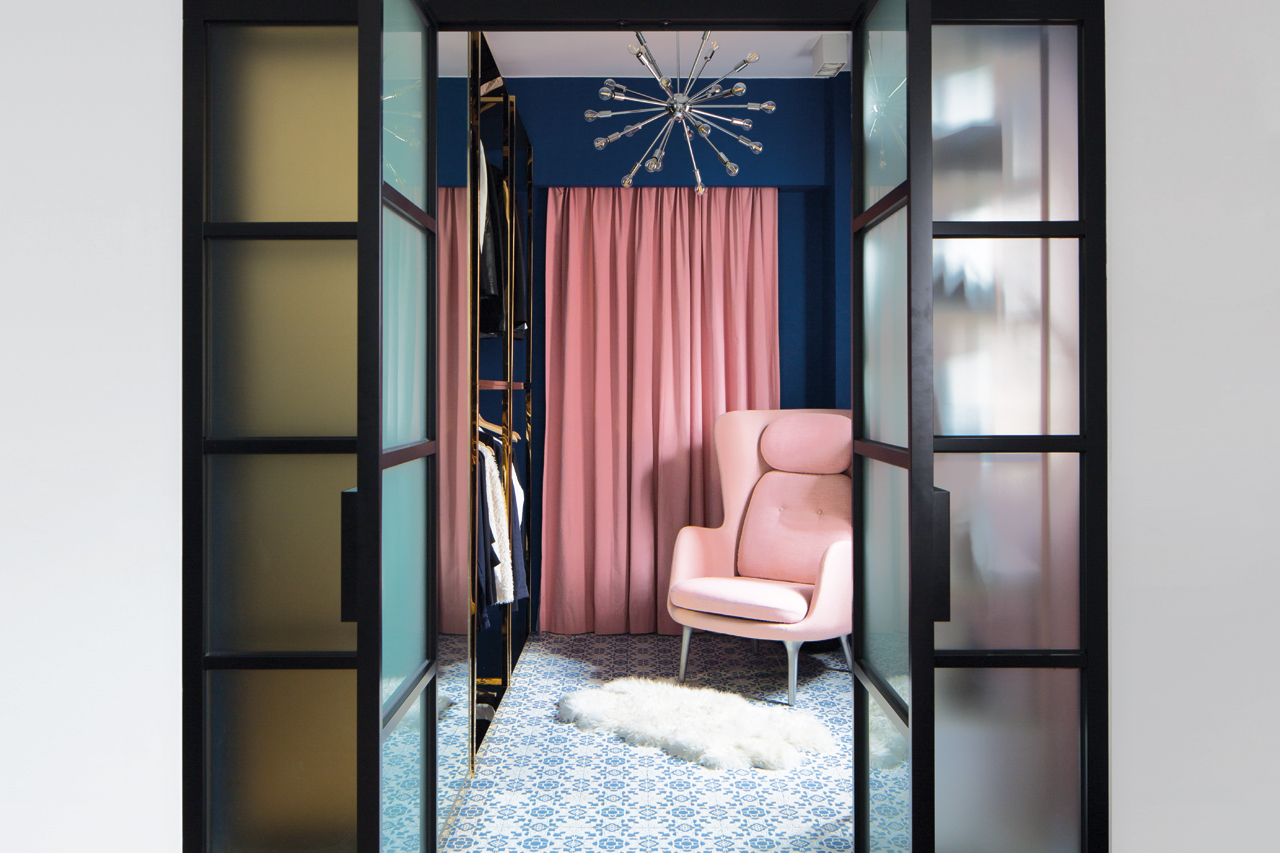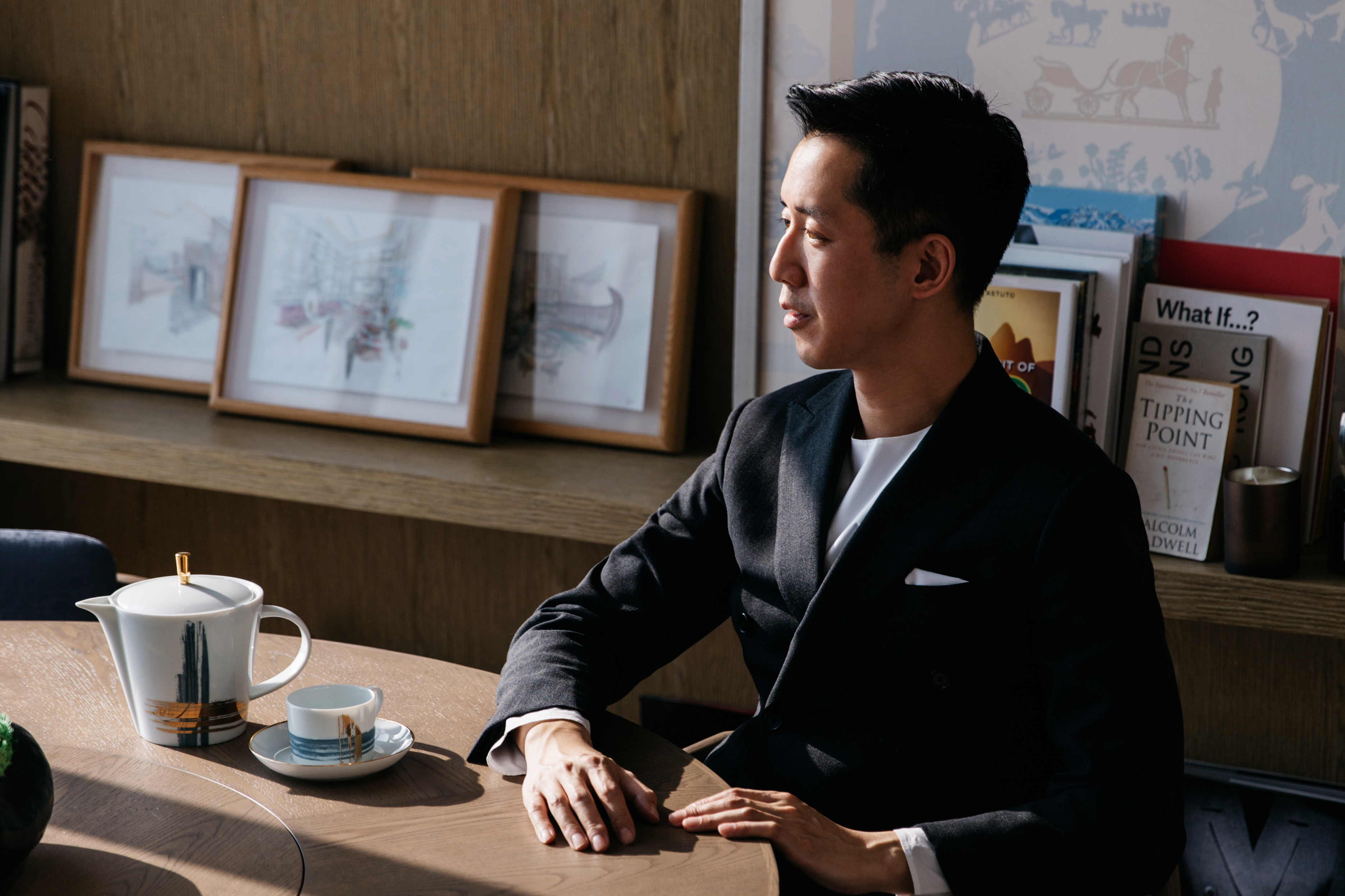When in doubt with your floor plan, simply remove all the walls. That’s the approach that husband-and-wife designer duo Khoon Toong Chow and Liting Lee of nitton architects took to designing their own home, resulting in a space that adapts to their needs.
Located in Singapore’s Sengkang district, the design – titled House in a Flat – repurposes an apartment within an 800-unit HDB estate, one of the city-state’s ubiquitous public housing developments that is home to over 80% of Singaporeans.
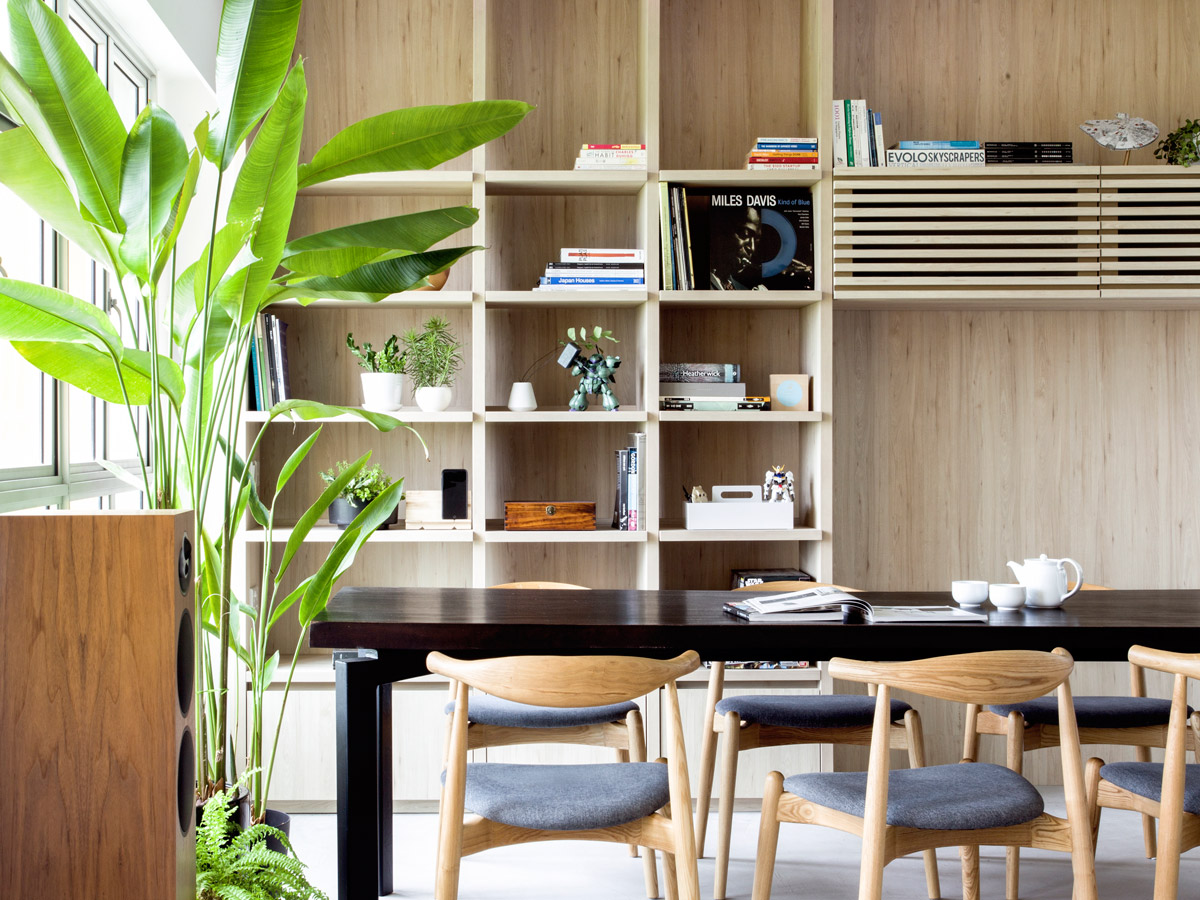
Given the tightly packed nature of the estate, Liting aimed to create an abode free of non-structural internal walls that would allow natural light to permeate, creating an uplifting environment that could change its use according to the couple’s routines, while remaining child-friendly and encouraging interactivity within the environment.
See more: How a young couple gave their 1,000-sqft Tai Po village house a new lease on life
Guiding the entire design was the concept of spatial layering, which allows each space to multiply and become enriched” by overlapping functions – the two bedrooms, for example, become mere extensions of the larger living space, separated only by sliding partitions and a full-height glass wall. Keep reading for a breakdown in the designers’ own words of this innovative apartment’s unique, space-enlarging features.
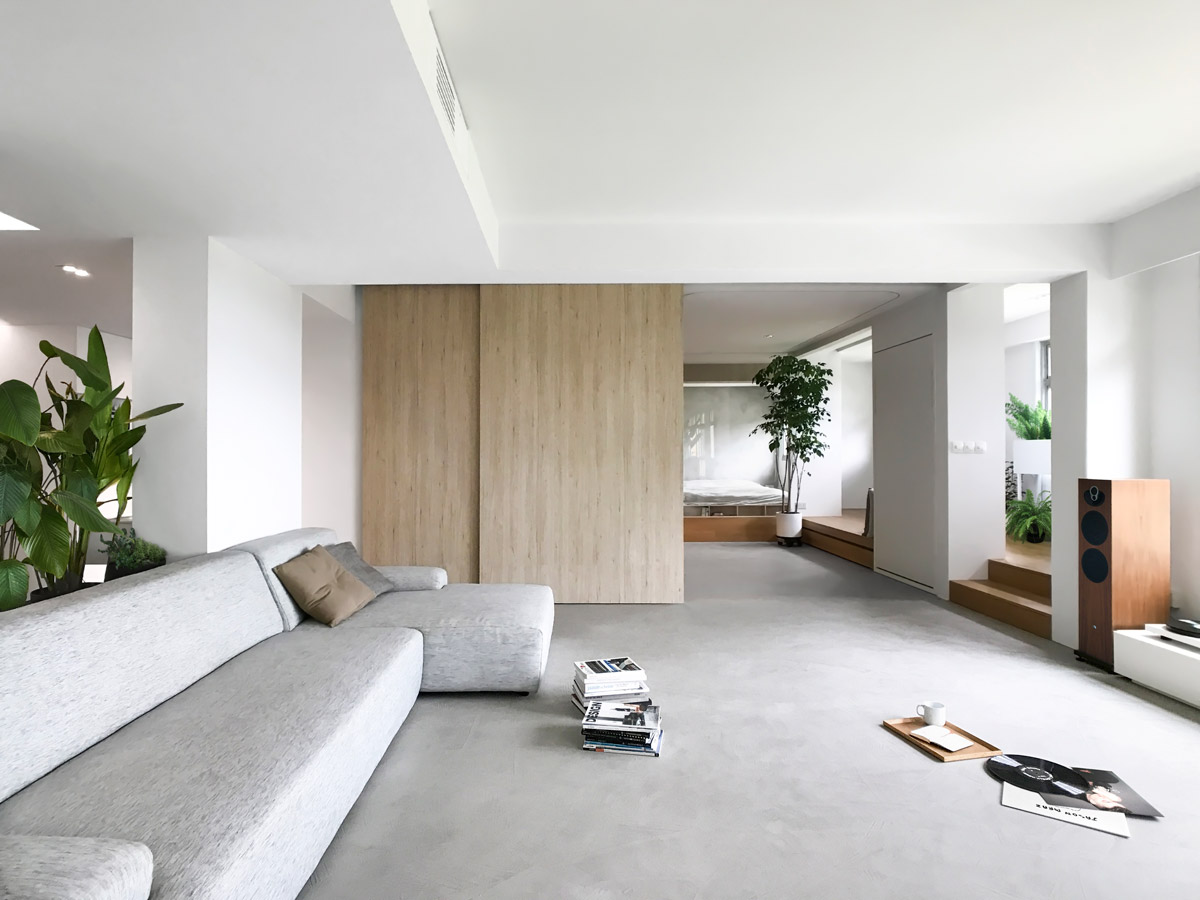

The way light interacts with space changes when elements are mobile, and depth of view shifts with the movement. With the sliding partitions and privacy curtains open, the visual depth of space extends throughout the full width of the apartment, animated by light.”
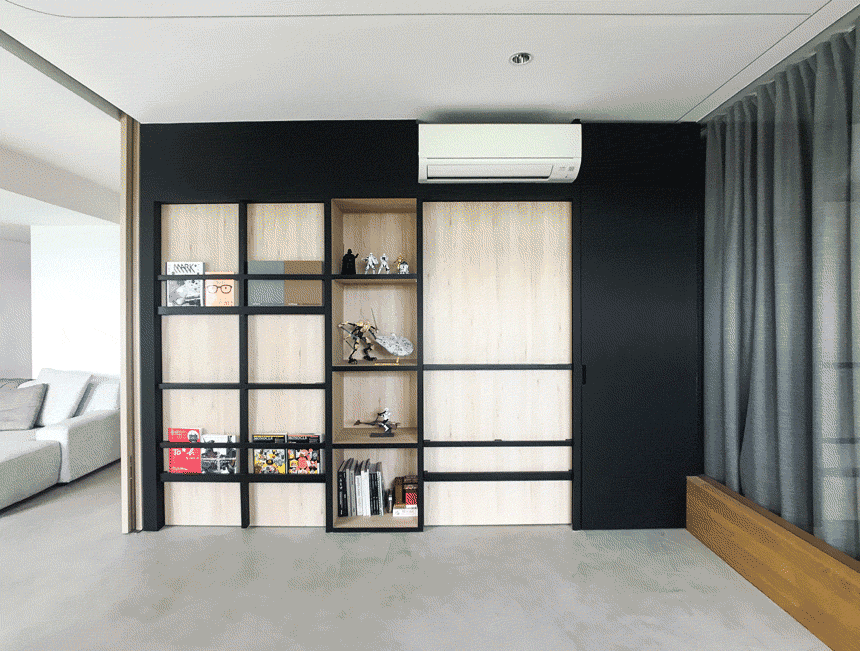
Unifying elements create the effect of spatial expansion. For instance, a continuous feature wall integrating two concealed doors visually extends one end of the guest room. One of the doors camouflages the common bath entrance, while the other leads to a walk-in wardrobe serving the guest room. This feature wall continues, albeit across a glass wall, into the master bedroom where it morphs into the vanity counter.”
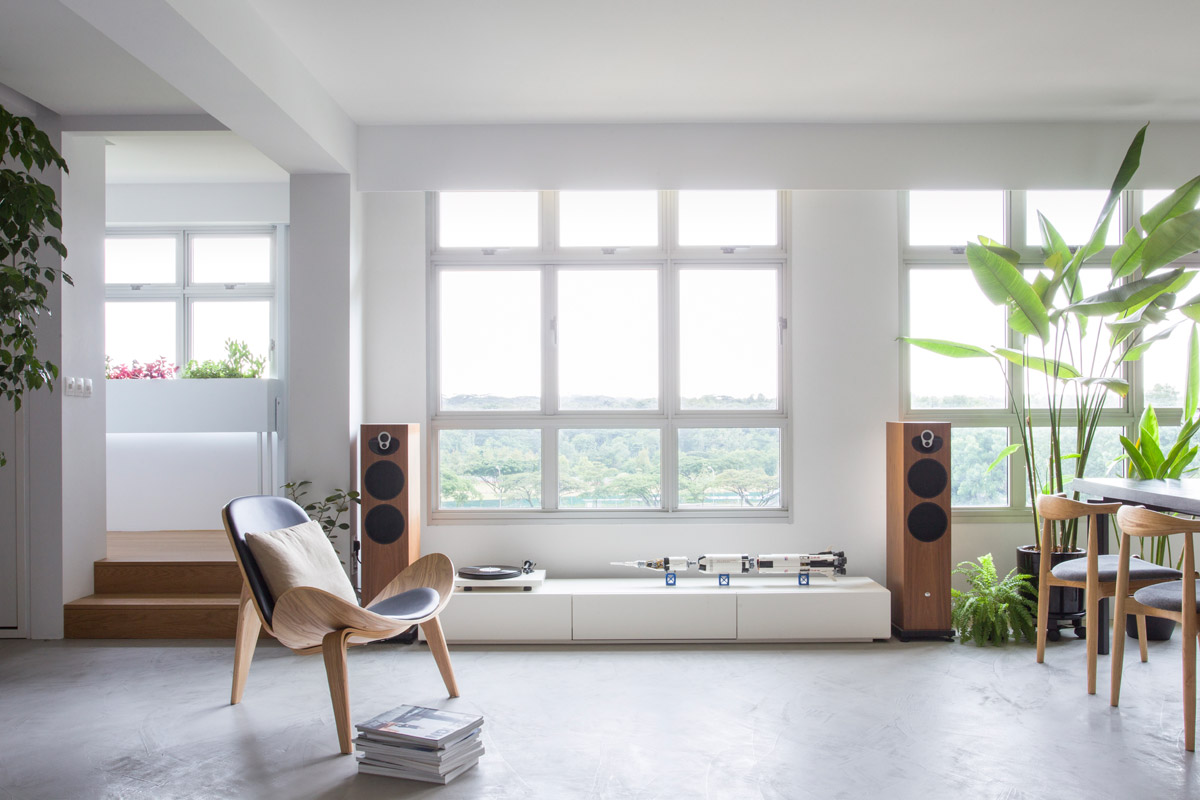
The master bedroom is accessed from an indoor garden with views out, a key spatial re-configuration that replaces the typical layout of having an internal corridor. The indoor garden transforms circulation space into a meaningful space for relaxation, where plants thrive within integrated planter stands next to windows. Mobile self-watering pots sit within the planter stands for plants to be easily moved around for regular misting and repotting.”
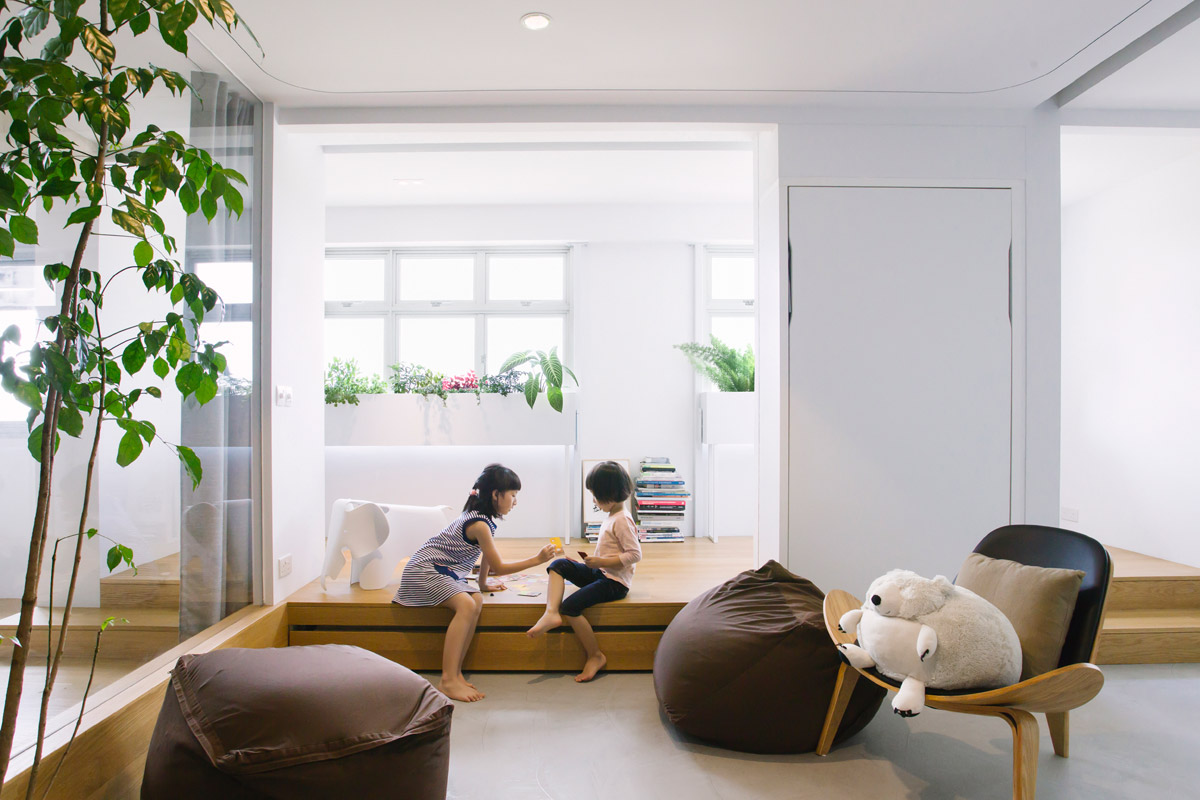
A curved curtain track recessed into the false ceiling caters for a privacy curtain to be drawn next to the common bath entrance, demarcating a passageway independent of the guest room.”
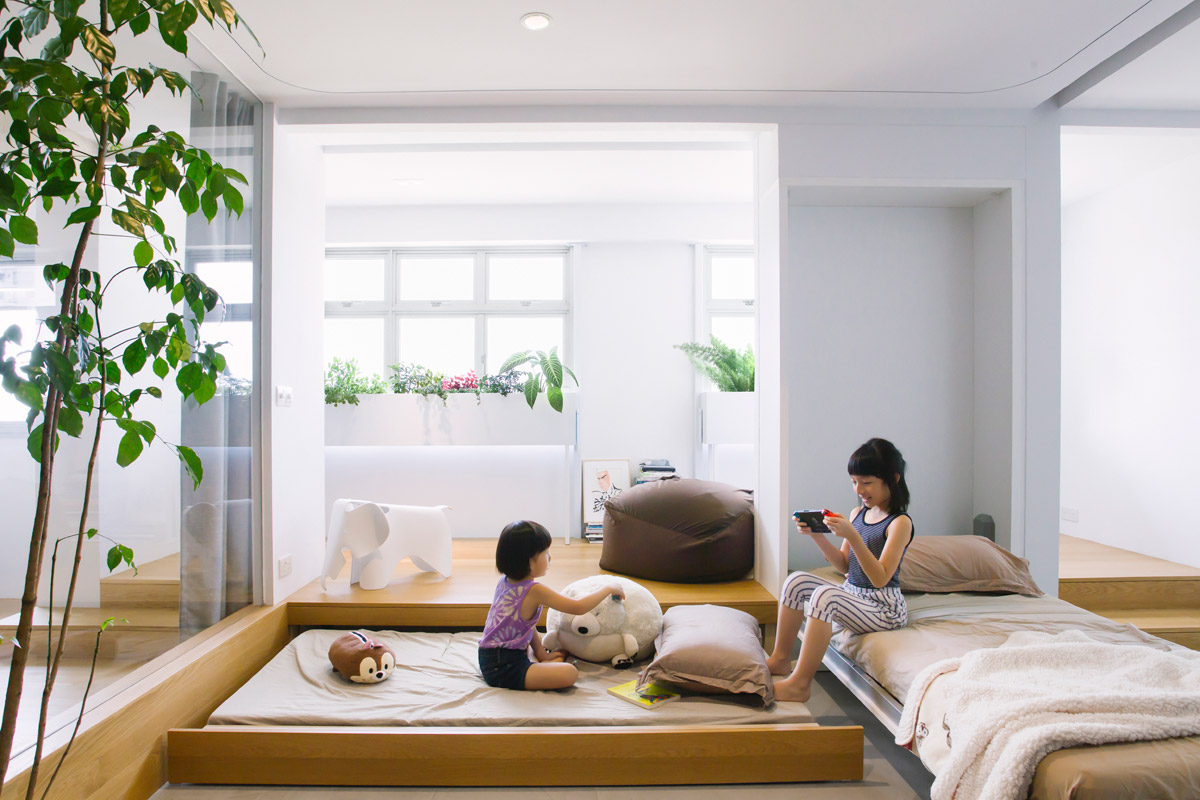
Flexible enclosure of the guest room is achieved through the integration of two concealed single beds. A pull-out bed is tucked beneath the raised timber deck of the indoor garden, while the other is a wall bed that is stored upright and folds down easily during bedtime.”
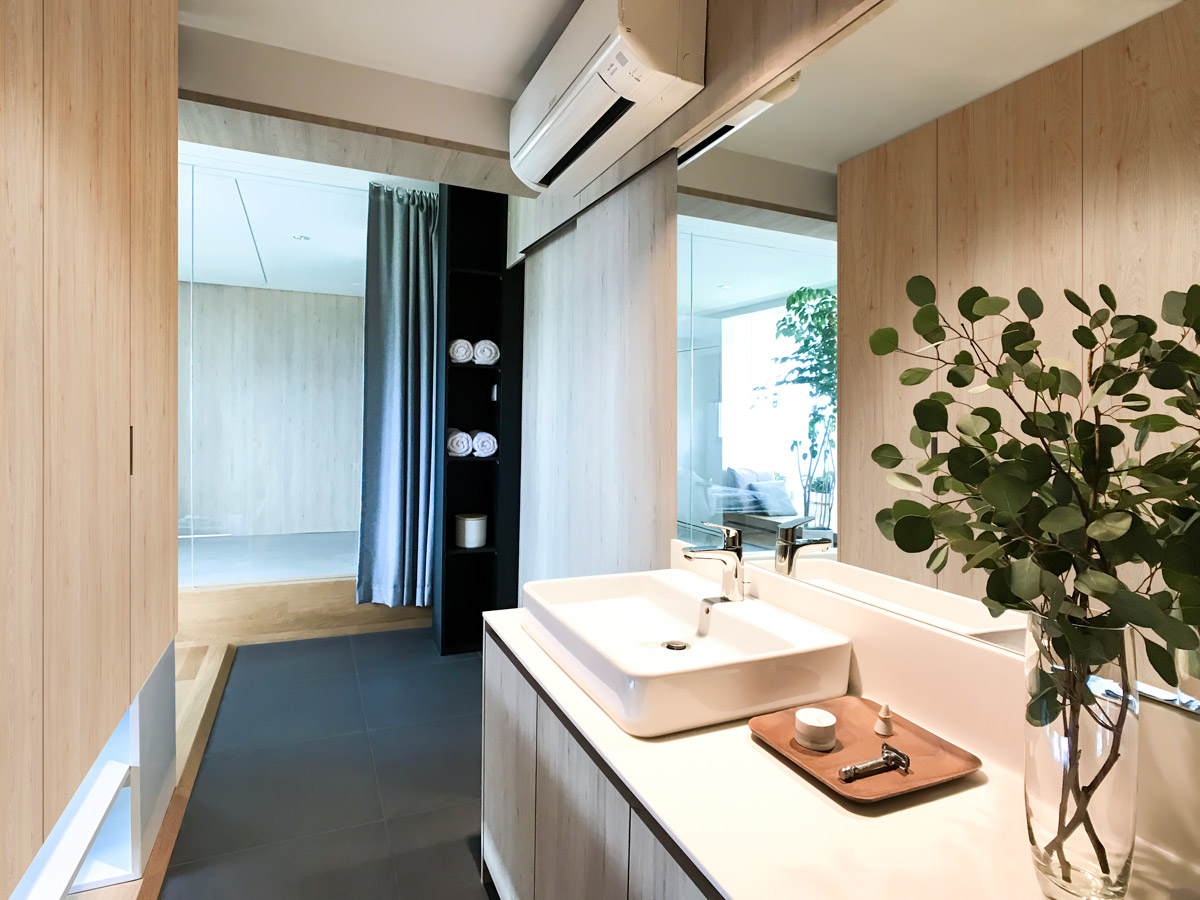
The master bedroom is re-zoned into a vanity area and space accommodating a king-sized bed by having a full-height wardrobe as divider. The wardrobe is lifted from the floor by a bottom steel frame, allowing natural light to filter through to the vanity area. Space within the master bath is also freed up to accommodate both a bathtub and a separate shower stall, enabling indulgent bath routines.”
With a purist approach toward architectural space making, confines of an apartment give way to a liberating way of living.
Hong Kong-based OFGA took a similar approach to spatial overlapping with their design for an apartment in Pok Fu Lam. For more inspiring interiors, check out our Interiors tag.
The post A 1,200sqft HDB flat in Singapore eschews walls for a fluid, uplifting home appeared first on Home Journal.




